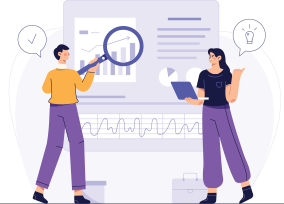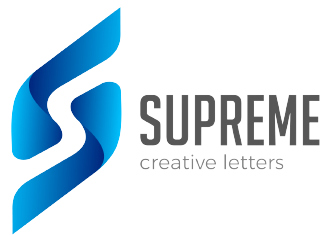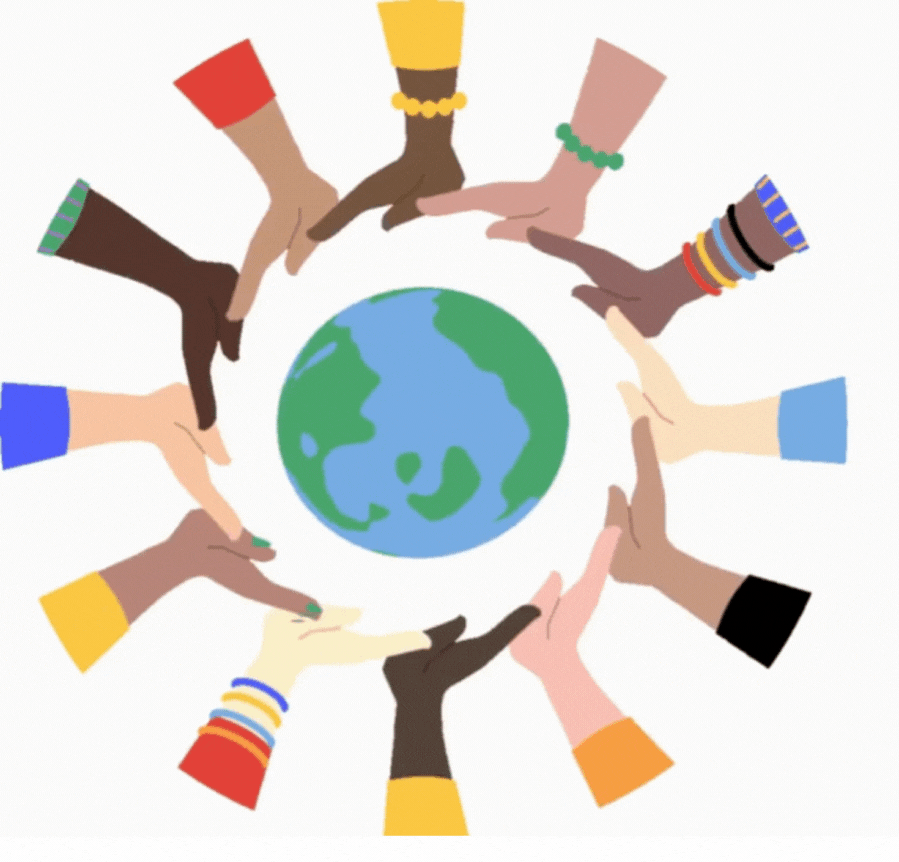Empathy-Powered
Analytics for
High-Trust Organizations.
What we do
Did you know, over 85% organizations don't have a trust measurement system in place?
To complicate matters, most 360-Degree measurement instruments suffer from high self-report bias, Likert scale shortfalls and are almost never followed up with the required behavioral interventions, in a safe space.
Why Empanetics

Research Based
Comprehensive studies guided by research from AHRD, IIHMR, Stanford, Northeastern, and MIT on OD, Culture, and Emotions

First-Principles
Approach
We are guided by the idiosyncratic context of both organizations and individuals, ensuring a tailored approach

Anonymity
Guaranteed
We prioritize the need to build a compassionate world at scale, ensuring anonymity throughout our processes
Solutions

Organizational
Culture Analytix
For Curating the Right Culture
Evaluate your culture’s perception across 12+ vital dimensions. Curate insights for impactful change

Leaders'
Action-Driver Analytix
For Trust Building
360-degree evaluation of leaders’ action-drivers, perceived across critical contexts

Craft
Your Culture
For Sustainable Growth
Leverage similarities, embrace differences, align perception for personalized interventions and optimal results

Action
Alignment Prompt
For Reinforcements
Consistent individual reinforcements to change perception of action-drivers

Continuous
Pulse Check
For Proactive Awareness
AI-powered quarterly reports unveiling the experienced culture. Insights delivered by AI

Cultivate
Empathy
For Cross-Cultural Collaboration at scale
Empathetic collaboration service, enhancing multi-cultural intelligence, enabling effective teamwork

Organizational Culture Analytix
For Curating the Right Culture
Evaluate your culture’s perception across 12+ vital dimensions. Curate insights for impactful change
/
- Culture as Experienced
- Culture as Perceived
For you if your organization has a formal culture.
Output: Culture Experience Score (CES)
A metric used to evaluate the experiential quality of an organization’s culture. It involves comparing two aspects:
1. Codified Culture: This represents the formalized and documented version of the company’s culture, which includes its mission, vision, values, and behavioral expectations. It is the culture that the organization aspires to have.
2. Actual Experience: This refers to the real-life experience of employees and stakeholders within the organization. It encompasses their day-to-day interactions, workplace atmosphere, and whether the culture aligns with the codified version.
CES assigns a score, to measure the degree of alignment between the Codified Culture and the Actual Experience. A high CES indicates that the organization’s culture is well-aligned with its intended values and is being effectively experienced by its members. On the other hand, a lower CES highlights potential discrepancies or challenges in translating the intended culture into the actual experience, prompting the need for corrective actions to enhance the cultural alignment and overall organizational effectiveness.
For you if your organization does not have a formalized culture.
Output: Perceived Culture Data (PCD)
A data analysis process that focuses on understanding the existing culture within an organization when it lacks a formalized culture. PCD becomes particularly relevant, as it helps to uncover the implicit or informal cultural aspects. It provides guidance for shaping a more intentional and desired culture based on the perceptions and feedback of those who interact with the organization.
By utilizing PCD, organizations can gain a deeper understanding of their current cultural landscape, make informed decisions about cultural improvements, and create a positive and aligned culture that fosters productivity, employee engagement, and overall success.
Emphasis is placed on gathering insights and feedback from various stakeholders, such as employees, customers, partners, and other individuals connected to the organization.

Leaders' Action-Driver Analytix
For Trust Building
360-degree evaluation of leaders’ action-drivers, perceived across critical contexts
&
&
&
- Leader's Dissonance Score (DS)
- Leader's Trust Score (TS)
- Leader's Trust Index (TI)
- Organizational Trust Index (OTI)
This metric highlights potential points of value conflict, enabling leaders to understand their impact on work-related stress levels.
The DS acts as a valuable tool for self-awareness and personal growth, helping leaders align their behaviors with their intended values. Addressing areas of dissonance can lead to a more harmonious work environment, improved decision-making, and reduced stress levels for everyone involved. Ultimately, this score empowers leaders to make adjustments and foster a more cohesive and effective leadership approach.
This pivotal indicator serves as a reference for leaders to fine-tune their communication and action-drivers, enhancing trust with relevant stakeholders.
The TS serves as a compass, guiding leaders towards more effective and trustworthy leadership practices. This data-driven insight empowers leaders to make informed adjustments, improving their approach to build and strengthen trust with team members, peers, clients, and other stakeholders. By actively working on areas that might impact trust, leaders can foster better relationships, promote collaboration, and enhance overall organizational success.
This index consolidates Trust Scores across critical dimensions of the organization, providing an overall measure of trustworthiness.
By aggregating Trust Scores, the TI offers a holistic view of a leader’s overall trustworthiness. It provides valuable insights into how consistently a leader is perceived as trustworthy in different aspects of their role. The TI acts as a powerful tool for leaders to track their progress in building trust and identify areas that may require attention. It offers a clear picture of their overall trustworthiness, encouraging continuous improvement and fostering a culture of trust and credibility within the organization.
This is a strategic index designed to assist the CEO and CHRO in assessing and enhancing the overall perception of the organization. It provides a consolidated view of leader-level trust between different functions and departments within the organization. In an ideal situation where all leaders achieve a 100% Trust Index, it signifies a high level of trust and synchronization among teams. This synchronized effort ensures a smooth flow of communication, efficient collaboration, and a shared commitment to delivering intended outcomes to the market.
By using the OTI, culture stewards can proactively address any gaps in cross-functional alignment, promoting a unified organizational culture and driving greater success in achieving strategic objectives. It serves as a valuable tool for fostering a cohesive and high-performing organization.

Craft Your Culture
For Sustainable Growth
Leverage similarities, embrace differences, align perception for personalized interventions and optimal results
&
- Culture as Expected Output
- The Culture Alignment Index
Expected Culture Data (ECD) involves a meticulous data collection process, incorporating societal inputs, conducting in-depth analysis, and advising on the development of an ideal contextual culture, across organizations of various sizes. The resulting comprehensive report offers expert guidance on crafting the desired culture, spanning the entire organization and individual key functions or departments.
1. <750 Employee Company:
Empanetics gathers insights on the expected culture from the management, including the board of directors. These key decision-makers provide their vision and expectations for the organization’s culture.
2. >750 Employee Company:
In larger organizations, Empanetics relies on collective wisdom. It gathers insights on the expected culture from the company’s employees, who form a diverse representation of perspectives. Depending on feasibility, stakeholders like Customers and Partners may also be included in the study. By obtaining ECD, organizations gain valuable information about the alignment of desired culture across different levels and stakeholders. This data can be used to identify areas of improvement, enhance cultural alignment, and foster a more cohesive and productive work environment.
The Culture Alignment Index (CAI) measures the alignment between “Ideal Culture” and “Perceived Culture” within an organization.
1. Ideal Culture:
This represents the expected culture that the organization aims to foster. It encompasses the core values, beliefs, and behaviours that the company aspires to have in its work environment.
2. Perceived Culture:
This refers to the culture as perceived by the employees and other stakeholders within the organization. It reflects their observations, experiences, and understanding of the prevailing work culture. CAI quantifies the degree of harmony or dissonance between the ideal and perceived cultures. A high CAI indicates a strong alignment, suggesting that the actual culture closely resembles the desired one. Conversely, a low CAI highlights potential gaps or discrepancies that need attention to bridge the divide between the ideal and perceived cultures for better organizational harmony and success.

Action Alignment Prompt
For Reinforcements
Consistent individual reinforcements to change perception of action-drivers
The “Action Alignment Prompt” is a systematic approach that utilizes consistent individual reinforcements (nudges) to alter the perception of action-drivers within critical dimensions of the organization. Recognizing the significance of habit formation, this prompt focuses on providing timely reminders to leaders.
The key objective is twofold:
firstly, to align action-drivers with the organizational ideal culture, thereby proactively reducing dissonance;
secondly, to address any issues related to inaccurate or unfavorable perception by team members or peers. By nudging leaders to communicate better and adjust their actions, the prompt aims to positively influence trust levels within the organization.
Consistency in these reinforcements ensures a gradual but steady shift towards a more cohesive and trustworthy organizational culture. By encouraging desired behaviors and fostering a better understanding of actions, the Action Alignment Prompt paves the way for a harmonious work environment and sustained positive change.

Continuous Pulse Check
For Proactive Awareness
AI-powered quarterly reports unveiling the experienced culture. Insights delivered by AI
The “Continuous Pulse Check” is a proactive approach to gaining awareness of the experienced culture within an organization. Utilizing AI-driven technology, this process involves conducting quarterly evaluations to uncover valuable insights into the prevailing workplace culture. involves conducting quarterly evaluations to uncover valuable insights into the prevailing workplace culture.
The goal is to stay updated with real-time data, enabling leaders to identify any emerging trends, issues, or areas that require attention. By having access to these regular insights, organizations can be more responsive and agile in addressing concerns and fostering a positive and productive work environment.
The Continuous Pulse Check empowers leaders with data-driven information, aiding them in making well-informed decisions to improve employee engagement, boost morale, and enhance overall organizational performance. This approach ensures that the organization remains attuned to its cultural dynamics, making timely adjustments to align with its desired values and objectives.

Cultivate Empathy
For Cross-Cultural Collaboration at scale
Empathetic collaboration service, enhancing multi-cultural intelligence, enabling effective teamwork
“Cultivate Empathy” is a pioneering initiative aimed at fostering cross-cultural collaboration at scale. This program focuses on enhancing multi-cultural intelligence, enabling more effective teamwork in diverse settings.
Drawing insights from social neuroscience and cutting-edge research on culture and emotions, Cultivate Empathy applies a deep understanding of human behavior in various cultural contexts. It recognizes the impact of stress-response tendencies and language on intercultural interactions.
This initiative empowers participants with the tools and skills to navigate cultural differences gracefully, leading to improved communication, problem-solving, and conflict resolution. By cultivating empathy, organizations create a more inclusive and harmonious work environment, unlocking the full potential of their diverse workforce.
Cultivate Empathy serves as a catalyst for creating a culture of understanding, respect, and cooperation among team members from different cultural backgrounds. By leveraging empathy as a key driver, this initiative empowers organizations to leverage diversity as a strength, driving innovation, and achieving sustainable success on a global scale.

Testimonials
Our objective was a 360 Feedback for the Leadership Team, shaping our culture. They understood our needs, asked insightful questions, and developed a plan quickly. The methodology used for feedback was notable, gathering input from various stakeholders. AI was used for analysis, providing detailed insights. The outcome left us satisfied and the investment worthwhile. I highly recommend them for their impactful Organization Development expertise.
Aparnesh Singh
Chief Human Resources Officer, SUN MOBILITY

Testimonials
The Leadership Intervention provided a mathematical view of our organization's motive, represented by six numbers across twelve dimensions. This objective perspective informed our overarching goals. The intervention also offered unbiased feedback from my reportees, enhancing work relations and collaboration. The combination of mathematical insights and feedback enabled informed adjustments for improved effectiveness and productivity.
Balaji Iyer
Head of Field Operations, Sun Mobility


Our Team

Tarun Agarwala
Chief Empathy Architect
TARUN AGARWALA, a founding member and our Chief Empathy Architect is a Social-Neuroscience research scholar. He studies the role of Culture and Emotions in interpersonal and interdepartmental relationships.
Empanetics is his effort to combine his expertise in running communication and technology companies with years of academic research to help leaders build and maintain empathy-powered organizations.

Kate DCamp
Principal Advisor
KATHRYN DCAMP, a Board Member and our Principal Advisor is CHRO Cisco Systems (Emeritus). She is an exemplary HR leader, recognized among “25 Most Powerful Women in HR”.
Empanetics, under Kathryn’s insightful guidance, seamlessly merges her expertise in Global HR Strategy, Employee Communications, and Leadership Coaching with cutting-edge advancements in scientific research and AI. This synergy empowers leaders to successfully build and sustain empathy-powered organizations.
Publishing Soon!

Featured Clients


